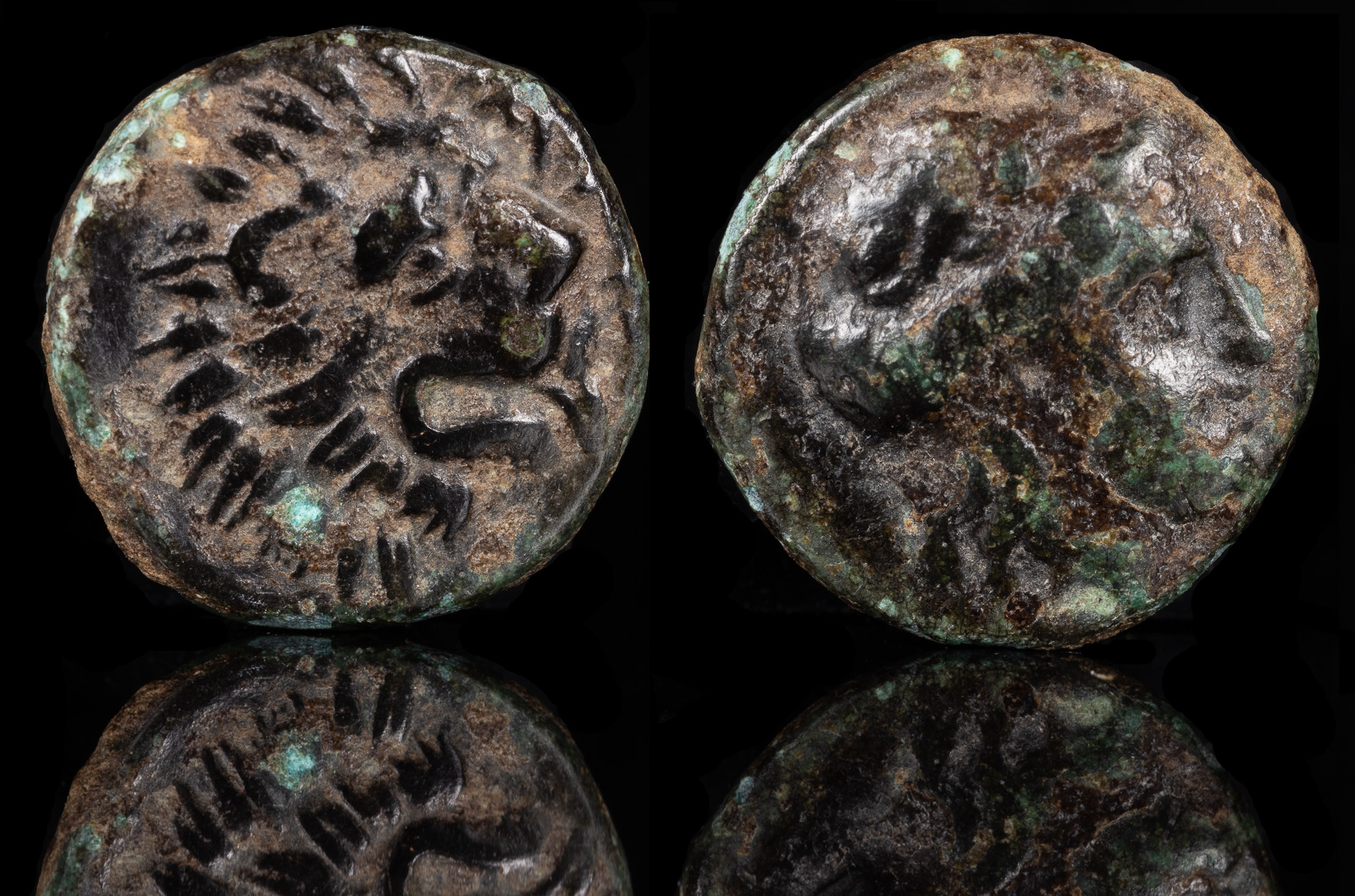
Troas, Antandros
c. 350-340 BCE
Æ 11mm, 1.43g, 12h
Laureate head of Apollo r.
R/ Head of lion three-quarters r.
Cf. SNG Arikantürk 263-5
Antandros was of high importance during classical times due to the large amount of timber in the area, which was useful for building ships. Virgil wrote of Aeneas building his fleet here, while both Thukyidides and Xenophon mention its lumber. The 10,000 also passed through Antandros.
The two primary cult gods worshipped in Antandros were Artemis and Apollo, who appears on this coin. During Hellenistic times, the city remained important due to its shipyards, but lost considerable fame. Very little is recorded as happening here during that period.
Otanes, satrap of Phrygia, captures Antandros, Lamponeia, Imbros, Kalchedon, and Hephaistia and Myrina on Lemnos.
Antandros joins the Delian League.
Antandros is taken by exiles from Mytilene.
Antandros removes its Persian garrison with the help of Peloponnesian troops from Abydos.
Pharnabazos orders ships built at Antandros. At the same time, Syracuse helps Antandros finish its city wall, resulting in citizen privileges for Syracusans there. When the ships are complete, Pharnabazos sails for Kalchedon.
The 10,000, as described in Xenophon’s Anabasis, travel through Antandros and Adramytteion.